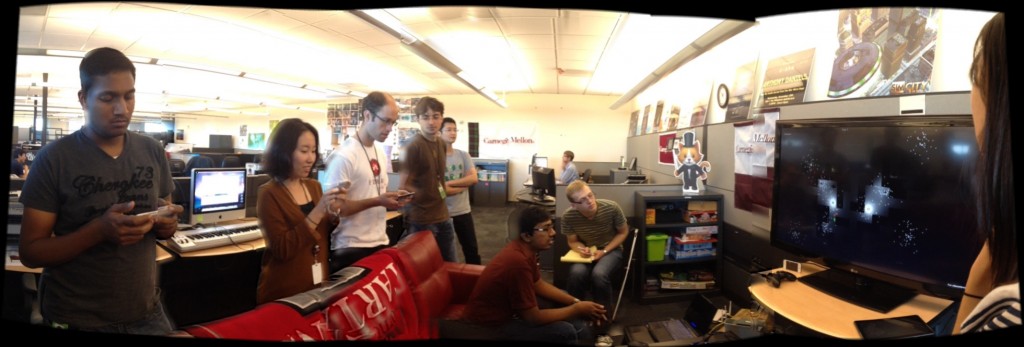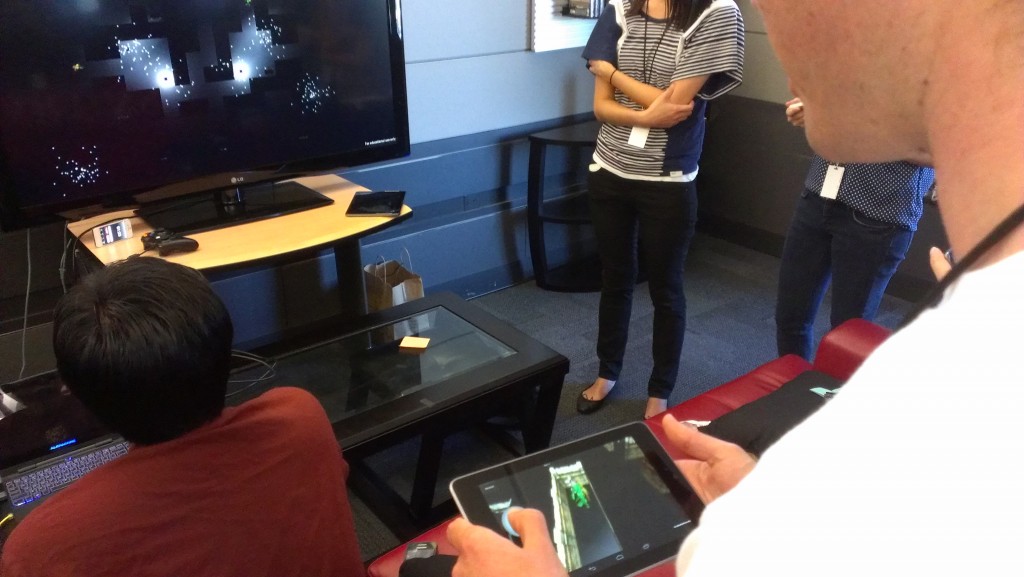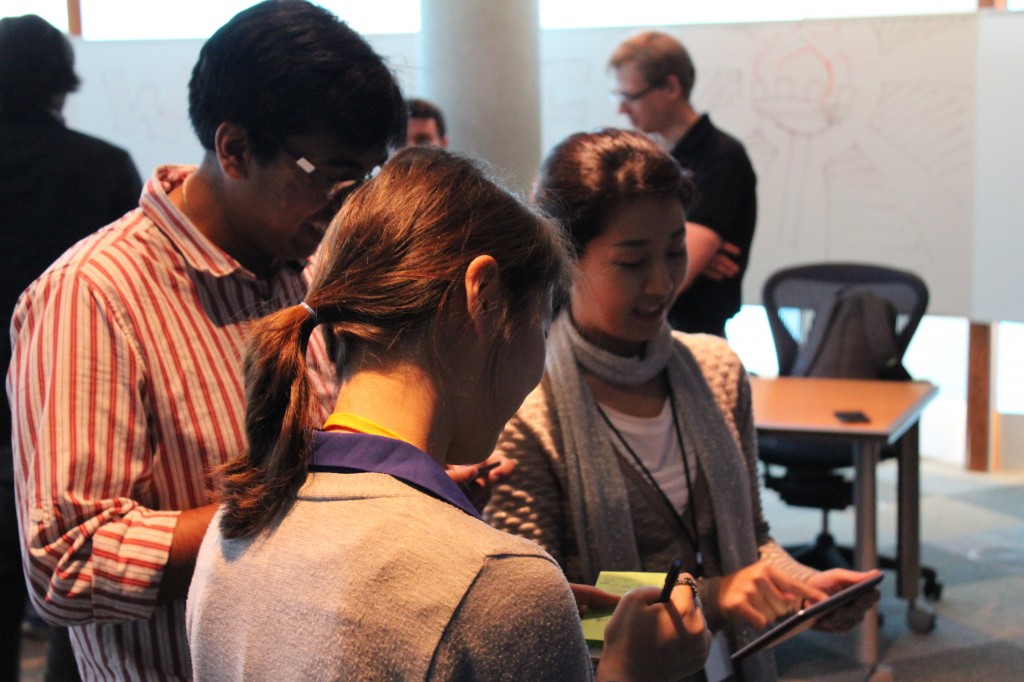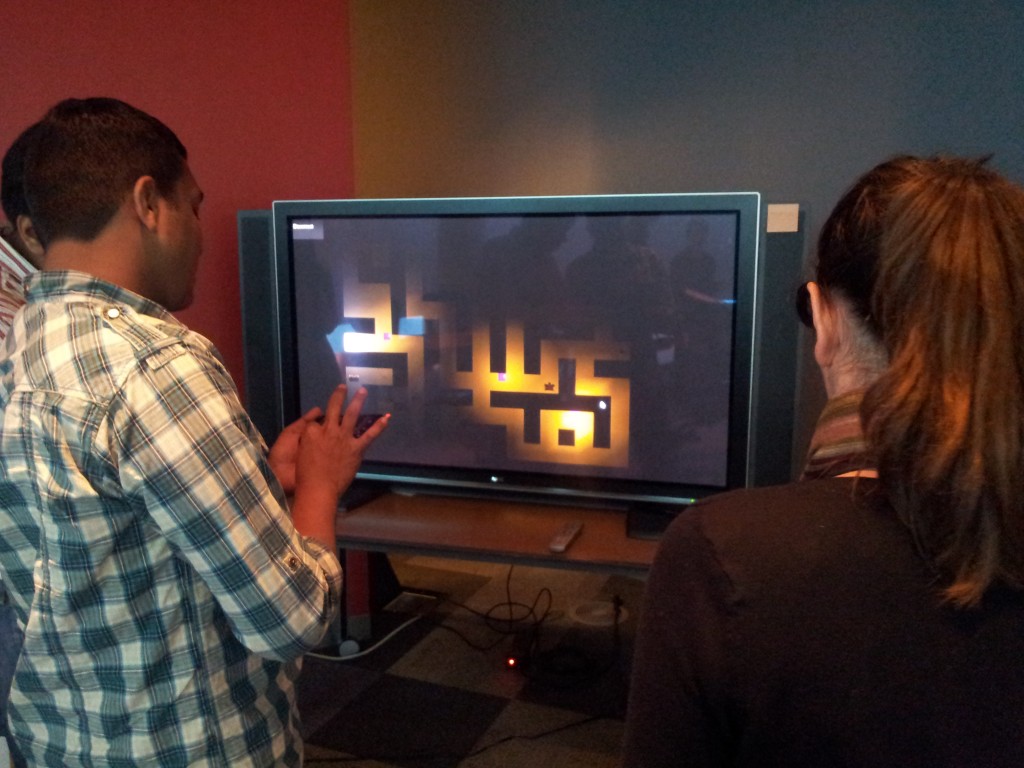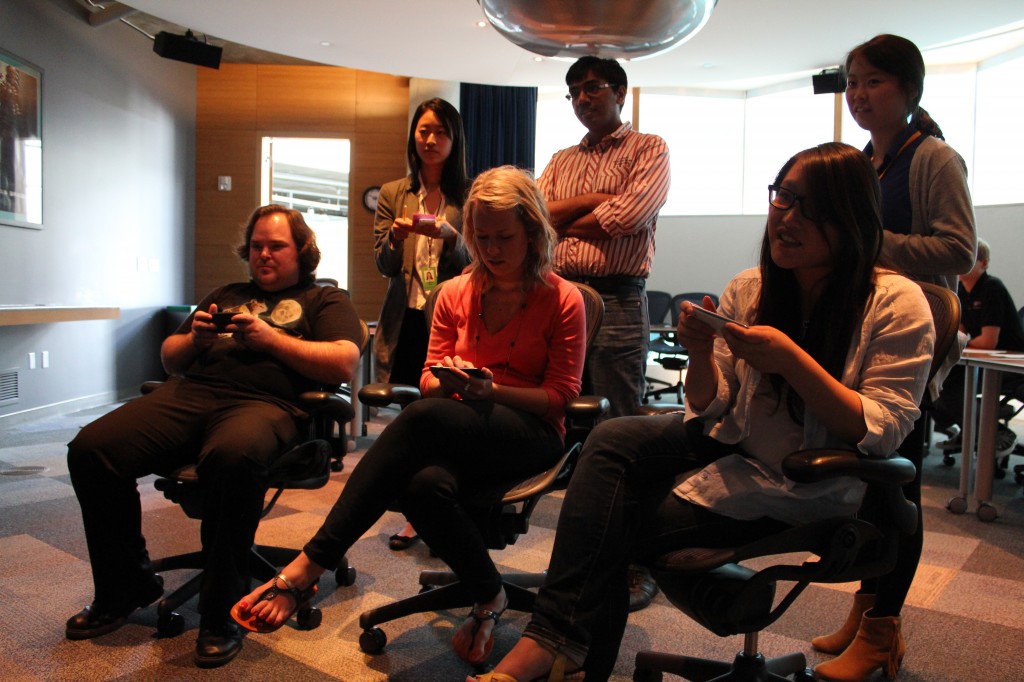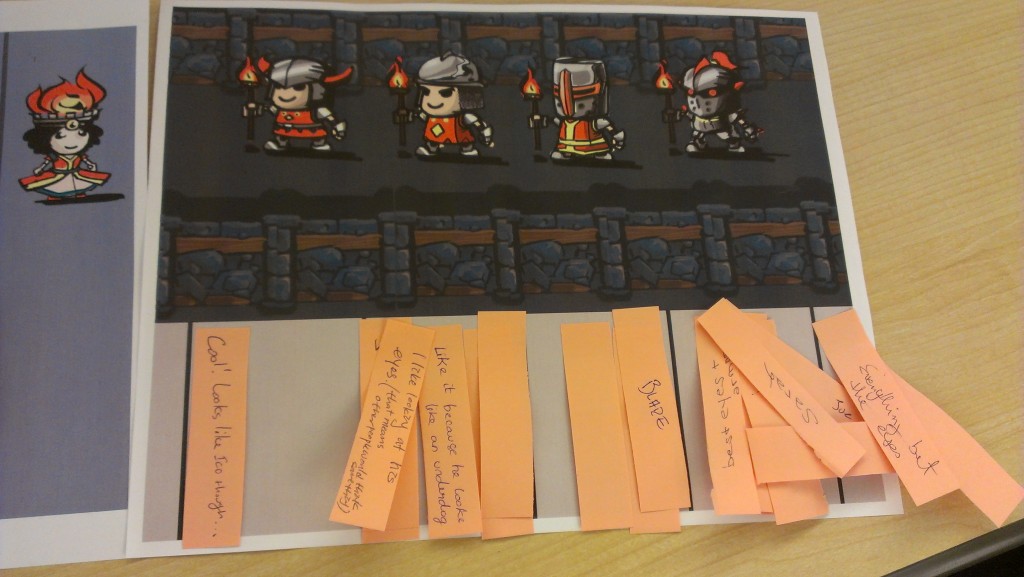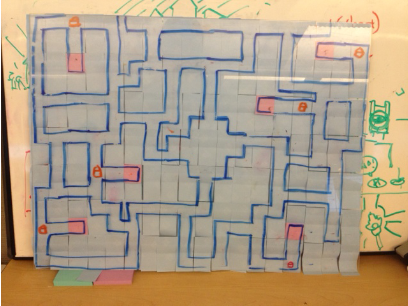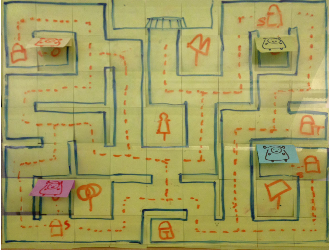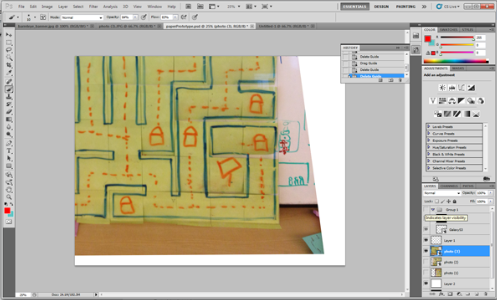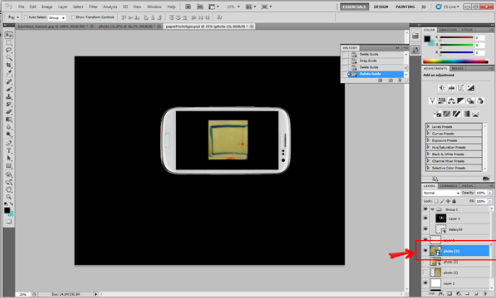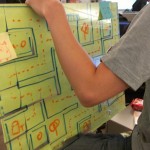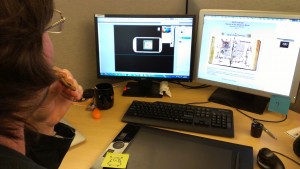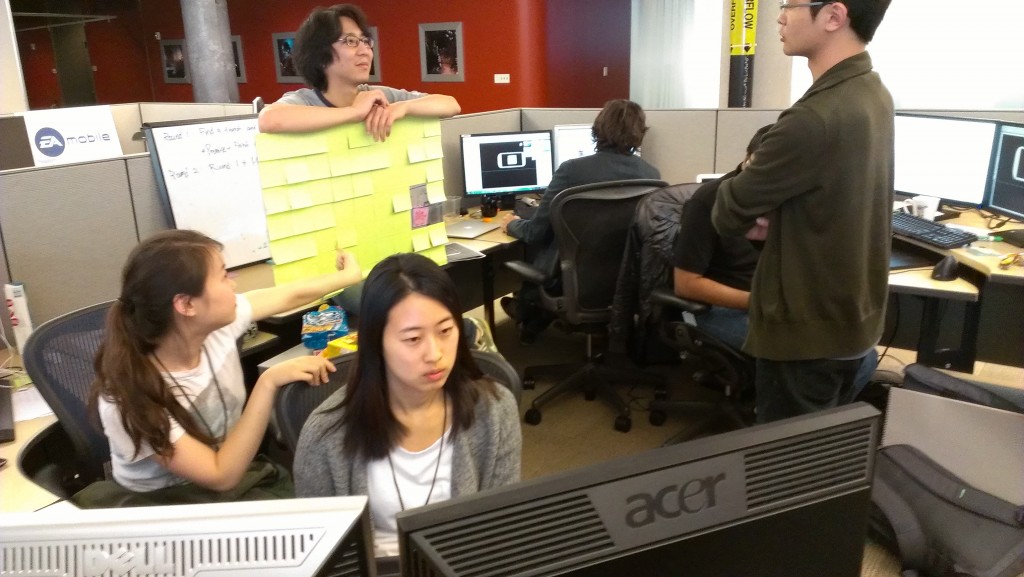No, it’s not the only internal test we’ve had so far, but it is the most official! On October 2nd our team packed up our “test kit:”
- One laptop with our Unity/server build
- Three mobile devices with our Android/client build
- One HDMI cable
- One wireless router
…and we hauled everything over to the ETC project space in another building, set up on their TV and couch, and had our playtest in their space. We intended to test the game ourselves but our advisors and fellow students are awesome and happily tested our game with us!
We made big improvements to our prototype since our last playtest, and it was obvious in this test. In some ways, players had the opposite experience that they had last time. The biggest improvement was that we added an objective for the players – there are now three keys hidden in the maze, and we challenge them to find the three keys as fast as they can!
Here were our biggest takeaways from the playtest:
- Everyone wants the characters to move faster! And since they’re taking too long to find the keys, that would be a good idea.
- People keep asking about other ways to control the character, whether with tap-to-move or tilt controls. We may have to revisit this just because it’s a requested feature.
- We need to loudly broadcast the event any time somebody picks up a key – players were often uncertain how many keys they had collected. Audio will help with this too!
- Players reported not feeling lost at all – in fact, our lights on the TV are revealing the maze a little too much!
- Players also reported looked at the TV more than they looked at the phone. This is reversed from last time… good progress!
It was nice to have an informal playtest, just to keep the team focused on the user experience. Our next one will be a more formal guest test. It’s not far away!

